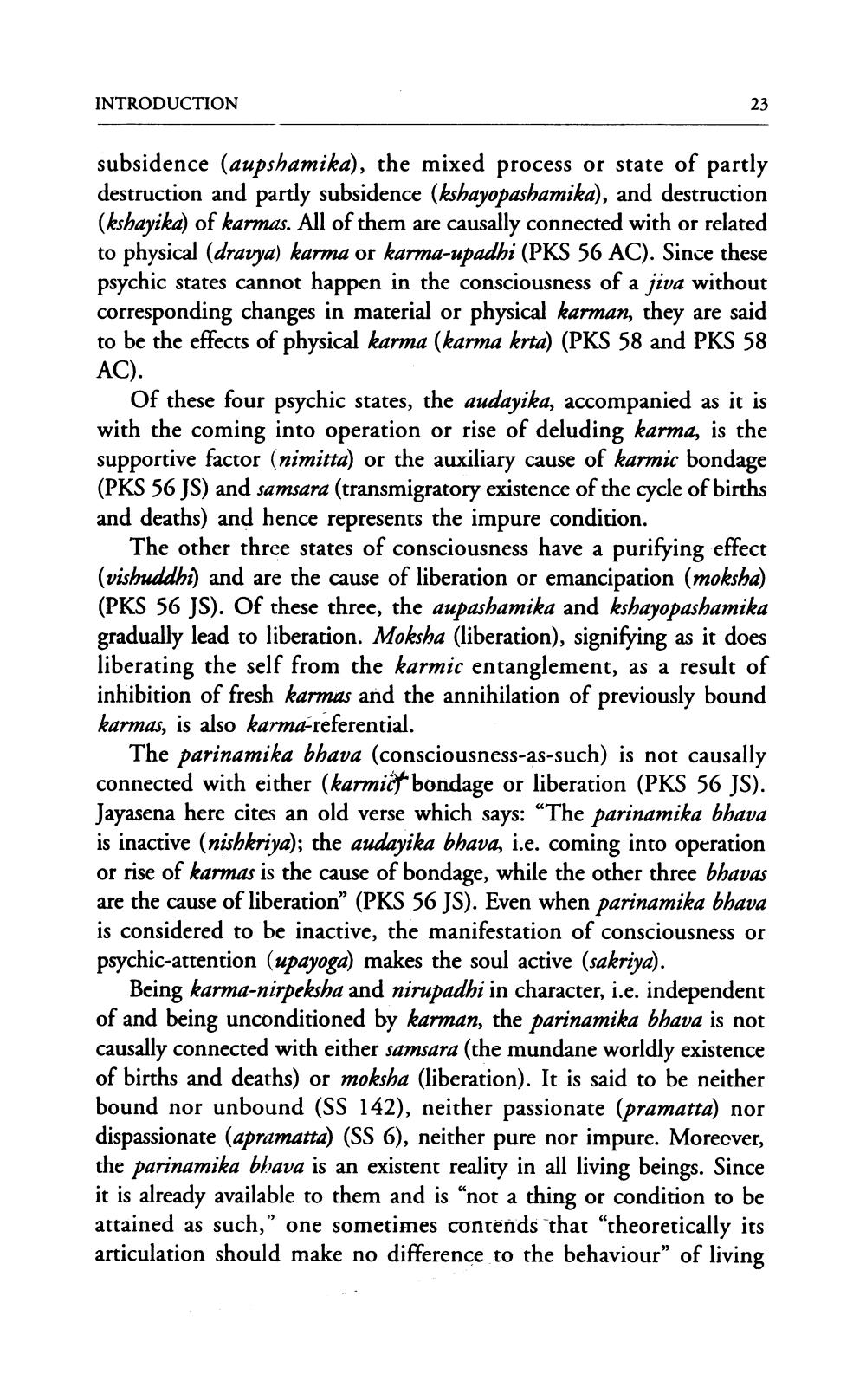________________
INTRODUCTION
subsidence (aupshamika), the mixed process or state of partly destruction and partly subsidence (kshayopashamika), and destruction (kshayika) of karmas. All of them are causally connected with or related to physical (dravya) karma or karma-upadhi (PKS 56 AC). Since these psychic states cannot happen in the consciousness of a jiva without corresponding changes in material or physical karman, they are said to be the effects of physical karma (karma krta) (PKS 58 and PKS 58 AC).
Of these four psychic states, the audayika, accompanied as it is with the coming into operation or rise of deluding karma, is the supportive factor (nimitta) or the auxiliary cause of karmic bondage (PKS 56 JS) and samsara (transmigratory existence of the cycle of births and deaths) and hence represents the impure condition.
The other three states of consciousness have a purifying effect (vishuddhi) and are the cause of liberation or emancipation (moksha) (PKS 56 JS). Of these three, the aupashamika and kshayopashamika gradually lead to liberation. Moksha (liberation), signifying as it does liberating the self from the karmic entanglement, as a result of inhibition of fresh karmas and the annihilation of previously bound karmas, is also karma-referential.
The parinamika bhava (consciousness-as-such) is not causally connected with either (karmick bondage or liberation (PKS 56 JS). Jayasena here cites an old verse which says: “The parinamika bhava is inactive (nishkriya); the audayika bhava, i.e. coming into operation or rise of karmas is the cause of bondage, while the other three bhavas are the cause of liberation” (PKS 56 JS). Even when parinamika bhava is considered to be inactive, the manifestation of consciousness or psychic-attention (upayoga) makes the soul active (sakriya).
Being karma-nirpeksha and nirupadhi in character, i.e. independent of and being unconditioned by karman, the parinamika bhava is not causally connected with either samsara (the mundane worldly existence of births and deaths) or moksha (liberation). It is said to be neither bound nor unbound (SS 142), neither passionate (pramatta) nor dispassionate (apramatta) (SS 6), neither pure nor impure. Moreover, the parinamika bhava is an existent reality in all living beings. Since it is already available to them and is not a thing or condition to be attained as such," one sometimes contends that "theoretically its articulation should make no difference to the behaviour” of living




